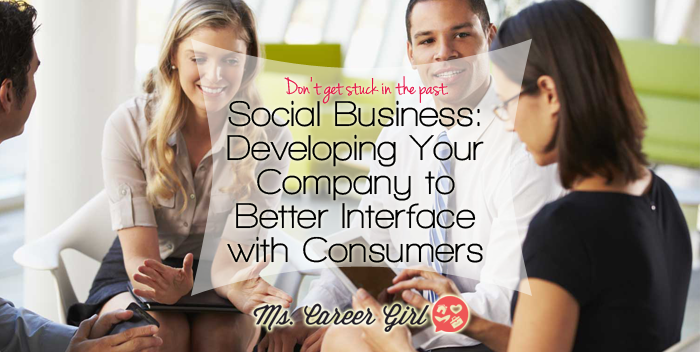Social Business: Developing Your Company to Better Interface with Consumers

Let me tell you a story.
In September of last year Urban Outfitters released a vintage-style Kent State sweatshirt – spattered in blood. If you’re not familiar with this reference, on May 4, 1970, several students on the Kent State campus were killed by members of the Ohio National Guard during a Vietnam War protest. While the circumstances surrounding that incident have been mulled over and over for more than four decades, the sweatshirt also brought into the minds of consumers more recent school shootings like Columbine, Sandy Hook, Virginia Tech, and NIU.
Richard Hayne, CEO of Urban Outfitters, refused to speak to the sister of one of the women killed at Kent State after she came across the sweatshirt on the company’s website. The woman released a letter she had written to Hayne for public consumption. Hayne did not ever apologize to her or anyone else for the sweatshirt incident, instead choosing to send an email to his employees about the “stories” being spread regarding the company’s alleged ill intentions.
Whoops. Not great press for your business (although Urban Outfitters seems to live for publicity from negative reviews).
Now, let me tell you another story.
Earlier this month, DoSomething.org, an organization geared towards effecting social change in the youth of today, made a marketing mistake by sending a mass text message to their entire user list of over 2 million members instead of to the targeted 4,000 it was meant for. Maybe not that big of a deal, except that the message was geared at Jewish teens and advertised a Jewish youth organization, and a significant portion of their 2 million plus members are not Jewish (and some – they found out – really, really don’t like Jews). DoSomething.org couldn’t retract the message – it had gone out by text. It wasn’t something that could simply be deleted from a Twitter or Facebook account either (although these days consumers screenshot corporate mistakes as soon as they’re spotted anyway).
So, what did DoSomething.org do? They owned up and they acted. They reached out to their supporters and said…wait for it…”sorry.”
Whoa. Hold up. The said sorry? Like, out loud? And meant it?
Yep.
And their community base responded favorably.
You may think it’s not fair for me to compare a big retail company to a community outreach organization, however with the changing face of how businesses utilize social media and interact with consumers, it is absolutely fair. Big companies have to become small and all companies need to put forth the effort to connect with every customer who needs their support.
The Importance of Engagement
I’m currently resolving a situation with my storage facility. How did I finally get their attention after months of terrible customer service interactions on the phone and in person? I tweeted to them and called out the awful service I had received from their reps. I made my complaint public. Someone at the company saw the post the next day (a long time in the age of “at your fingertips” – I’d practically written them off) and reached out immediately. Within 20 minutes I had an email from their Twitter account manager asking how he could fix the situation and was on the phone with the district manager – both breathlessly trying to figure out what they could do to make things better.
In their book [amazon template=product&asin=081443326X], Ted Coiné and Mark Babbitt talk about the benefits of engaging with customers in meaningful ways instead of simply tossing sales pitches at them.
“Customer experience determines long-term profits. Done right, customers will love your brand well enough to stick with you through thick and thin. They’ll brag about you on social so much that they’ll act as a huge, ultra-effective extension of your paid sales force. They’ll happily bring you their friends. Your delighted customers will grow your company – and your profits as a result.”
Conversely, dissatisfied customers can bring your company down with negative publicity if you choose not to interact with them and address their issues.
Building a Social Workplace
If your company isn’t already cultivating strong social interactions with customers, you may be asking yourself where to begin.
IBM is a great example of a social workplace. They have built a strong community among their employees. These employees, in turn, are then able to reach out to customers and provide insights and support with the blessing of their company. Their Social Business Agenda is an easily translatable framework for doing this in any workplace.
In their Redbook on IBM Social Business they stress, “Social Business is a game changer, by enabling a business and its employees, customers, and partners to more easily find the information and the expertise they need at the time of need. It helps groups of people develop communities of shared interest and coordinate efforts delivering better business results faster. Social Business encourages innovation and idea creation by the individuals in this business relationship and builds or shares intelligence with those in the community.”
And the world of business IS changing. Coiné and Babbitt (half) joke that if you’re not social yet, you’re a dinosaur. The Social Age is here. And you and your company need to be a part of it for continued business growth.

